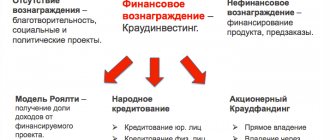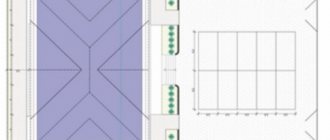What it is?
Bonds are the closest alternative to bank deposits in the stock market.
These are securities (debt obligations of companies or the state) that work on approximately the same principle as a bank deposit. You buy a bond for 100 rubles, and after a year (or any other agreed period) you are promised to return these 100 rubles, plus a fixed percentage of income, which can be paid once a quarter, half a year or year. When purchasing a bond with a face value of 100 rubles. for 100 rub. with an interest rate of 10% per annum for a period of 1 year, in a year you will receive 110 rubles. Bonds are traded on the stock market. They can be purchased either independently by opening an account with a broker, or through a management company by purchasing a share in a mutual fund.
Bonds are issued for a specific period. It can be 1, 2, 3 years or more. If you decide to sell the bonds ahead of schedule, for example, in six months, then if the market situation is favorable, you can return their full value and receive interest for six months in full, that is, 100+5 rubles.
Bonds are traded on the stock market and their value may decline. It depends on the international situation, the policy of the Central Bank, the situation in a particular company or industry. Market participants buy and sell securities every day. For this reason, if you decide to sell what you bought for 100 rubles. bond six months after purchase, against the backdrop of negative news, you can make a mistake. You, of course, will receive all the interest on it for 6 months, that is, 5 rubles, but at the same time, the cost of the security itself may fall to 95 rubles. This is the amount it can be sold for. In the end, at best, you will remain with your own.
But if the situation changes in your favor and, for example, the United States lifts sanctions on Russia, the value of the bonds, on the contrary, will increase, and you will be able to sell it, for example, for 105 rubles, and again receive your interest in the amount of 5 rubles. However, we repeat, you can be guaranteed to return your 100 rubles plus 10% per annum only when the previously agreed release date has passed.
Unlike a bank deposit, where the state guarantees the return of 1.4 million rubles. in the event of a bank closure, the return of funds on the bond is guaranteed only by the one who issued the bond - the state in the case of government bonds or the company. For this reason, when choosing a suitable bond, you need to focus not only on its term and profitability, but also on the reliability of the company that issued it.
So why are bonds better than deposits?
Due to their reliability, reduced level of risk and return of the same order of magnitude, bonds are most often compared with bank deposits, and often the comparison goes in favor of the deposit: they say, you don’t worry about it at all - you put the money in the bank, signed the agreement and forgot for the time being, the money will come up on its own . However, this motivation is for endless lazy people. In our age of electronic accessibility of everything in the world and high-speed Internet, purchasing bonds is not so difficult and time-consuming, and, by the way, they have advantages.
- You can choose bonds with different levels of risk and return and combine them in your investment portfolio.
- If you decide to sell or pay off bonds before the expiration date (end of the term), you do not lose interest, that is, coupon income.
If the deposit is withdrawn early (except on demand), interest is lost. However, unlike a bank deposit, which can be withdrawn early at any time in case of urgent need, bonds most often cannot be repaid ahead of schedule. The maximum that can be done with them is to sell them on the stock exchange at the current market price, which means incurring the risks of exchange rate changes (for example, you bought bonds for 1000 rubles, urgently liquidate them at the current market price of 870 rubles, and at the time of maturity in 2022 they will cost as much as 1330, you lose this income due to the urgency of the transaction). But when selling bonds early, you do not lose coupon income - the new owner of the securities will compensate you for it, that is, unlike a bank deposit, you do not lose interest.
- Low barrier to entry into investment. If you have ever made a deposit in a bank, you have probably noticed that the deposit rate depends on the term and, most importantly, on the amount. The maximum percentage can be achieved with a deposit of one million or more (sometimes significantly higher). In the case of bonds, the designated coupon size is the same for everyone, whether you invested 10 thousand or 10 million.
- OFZs, Eurobonds and some corporate bonds are much more reliable than a bank deposit. If the bank fails, there may be problems with deposit payments (especially above the insured amount guaranteed by the deposit insurance agency (DIA)).
- If a floating coupon rate is not provided, the yield on the bond may be more stable than the yield on deposits. For example, in that Gazprombank over 10 years the rate fell from 11% to 4.3%, and on some bond the coupon income remained at a rate of, say, 5%. But again, this is a controversial advantage, since bank interest can change in different directions and with different dynamics. For example, according to the situation of the last ten years 2010-2020, a bank deposit turned out to be more profitable than a bond with a coupon yield of 5.1%. But in the dynamics of the next three years, I am almost sure that bonds will significantly outperform banks in terms of profitability, so I recommend it to beginners and the most conservative investors. In addition, we should not forget that you and I are looking for ways to generate income, so in different economic scenarios you can sell bonds and invest in stocks or transfer money to a deposit that seems more profitable.
- Bonds are a great tool to use in combination with an IIA (individual investment account): if you open it and buy securities in it (not in a brokerage account) for three years in the amount of up to 400,000 per year, only due to tax benefits you will receive a yield of about 8% per annum (this does not include the yield of the bonds themselves). There are two drawbacks: you need to wait three years and have income subject to personal income tax at a rate of 13% (so that you have something to deduct from). Alas, this option is not suitable for the self-employed, individual entrepreneurs, pensioners, people with mediocre salaries and simply those who love unemployed life.
But, unfortunately, unlike a deposit, bonds do not have deposit insurance, so the risks for them are slightly higher (if we are talking about small amounts of funds). Although, frankly speaking, in the context of constant bank reorganizations, the liquidation of individual financial and credit institutions and constant rumors about the withdrawal or freezing of any deposits in favor of the state, the existence of insurance “for one million four hundred” looks somewhat faded.
What types of bonds are there?
Government bonds
This is one of the most reliable ways to invest money. This option is interesting, first of all, for those who like to keep funds in Sberbank, where the rate on a deposit for a period of one or three years is 5-6% per annum, and on a deposit with the possibility of replenishment and partial withdrawal without loss of interest is 1.5-2.3%. At the same time, the yield on OFZ (federal loan bonds) is about 8%, the interest on 2-year OFZ is about 8.12% per annum. The state acts as a guarantor of money return, so you can safely invest more than 1.4 million rubles in OFZs.
If you want to get a higher yield, you can purchase municipal or regional bonds issued by a large city or region. The coupon income on such bonds is higher than on OFZs, and it is also not subject to income tax. But here the risks are higher, because a separate region could theoretically declare itself bankrupt, so it is better to choose the largest metropolitan areas and rich regions, such as Moscow, St. Petersburg, Yekaterinburg, etc. A nice bonus is that income from government bonds is not subject to taxes.
Yield: up to 7.5-8.5% per annum
Entry threshold: 1,000 rubles (that’s how much one bond costs).
Corporate bonds
If the yield on OFZ seems too modest, then you can invest in corporate bonds (company securities). In conditions of economic instability, it is better to choose securities of the most famous and large companies, such as Gazprom, Rosneft, Sberbank, VTB, Severstal, etc.
But there is one “but”. From the income received, you will have to deduct not only the broker's commission, but also the 13% personal income tax, which is levied on interest on bonds.
There is one life hack. For bonds issued no earlier than 2020, it will be possible not to pay personal income tax, but only on the coupon that will be credited to the investor’s account from January 1, 2020. If you buy a bond on these conditions, then the yield on it will be almost equal to the coupon rate. For example, the other day Gazprombank placed three-year bonds at a rate of 8.65% per annum. That is, having invested 100 thousand in a bond with such a rate, you will receive an income in the amount of 8400-8500 rubles in a year, minus the broker's commission. or about 8.4-8.5% per annum.
Yield: 8.4-8.5% per annum
Entry threshold: 1,000 rubles
People's Bonds
In the spring, the Ministry of Finance launched a special instrument - simplified so-called people's federal loan bonds or OFZ-n. The rate on them is even higher than on ordinary OFZs and amounts to 8.5% per annum. Such securities are usually placed for three years. Coupon income on them is also not taxed. However, an additional commission will have to be paid to banks that act as sales agents. Moreover, this commission is greater, the smaller the amount invested. When purchasing securities worth less than 50 thousand rubles, the commission will be 1.5%. If 50-300 thousand rubles - 1%, more than 300 thousand rubles - 0.5%. In addition, banks may charge a commission for early presentation of a bond for redemption, and with early repayment, you can lose part of the accumulated coupon income. However, if you hold the paper until the end of the term and invested 100 thousand rubles in these bonds, you will ultimately receive an income of 8.4% per annum minus the bank commission or 8,400 rubles.
Yield: 8.4% per annum
Entry threshold: RUB 30,000.
How much can you earn on bonds?
The bond's yield is higher than the average interest on a bank deposit . The issue of bonds is also beneficial for the issuer. After all, the remuneration paid in this case is less than for a loan received from a financial institution.
Russian federal bonds look the most reliable. State-guaranteed returns range from 5% to 8% . Recently it has been declining due to the Central Bank lowering the key rate. The coupon for them either depends on a specific value or is fixed. This way of earning money cannot be called the most profitable. However, it is the least risky investment.
You can make good money on corporate bonds. True, if they are produced by serious structures. Like Sberbank or Rosneft.
The yield of bonds depends primarily on the riskiness of the transaction. If securities of a little-known and unreliable issuer are put on the market, then they offer a larger percentage to attract investors. From 15% and above. Even coupon payments may in this case be paid more often than usual. Once every 3 months, for example, and not once every six months.
Bonds with higher yields are also traded on exchanges. Both 50% and 100% . Even 200% . But these are all “ junk ” bonds, so named because of the huge risk of non-payment.
It is extremely difficult for an inexperienced investor to make money on such bonds, with a huge “ risk premium ”. Transactions with them are most often carried out by investment funds, forming an investment portfolio in a special way. These “ junk ” securities are added to reliable securities. And then they are offered to inexperienced investors, lured by higher returns.
By the way, it was precisely such speculation in the stock market that became one of the causes of the 2008 crisis, when Fannie Mae , Freddie Mac and Lehman Brothers refused to fulfill their obligations.
Open a brokerage account
You can purchase bonds by opening an account with a brokerage company. To do this, you must first choose a broker. The full list can be viewed on the Moscow Exchange website.
Top 15 brokers with the lowest commissions
To conclude a contract, you will need a passport. The broker will open a brokerage account and help you install a trading program on your computer, and also explain how to buy a particular security.
The broker earns from client commissions from trading operations. In order not to overpay, you must ask to select a tariff for your specific needs. Let them know that you intend to make a minimum number of transactions, that is, buy and sell the paper in a year or two. The bond can be purchased through your personal account after you have installed the trading application on your computer, following the instructions of the broker. When you decide to withdraw funds, inform the broker about this desire. The money will be transferred from the brokerage account to the bank account, and from there it can be withdrawn at the cash register or through an ATM.
The commission for the purchase/sale of bonds ranges from 0.025% of the transaction amount. You also need to pay 100-177 rubles. per year for storing securities in the depository. An additional small amount will have to be paid for withdrawing funds (approximately 10-50 rubles). The amount of commissions depends on the broker and transaction amounts.
An example of forming a bond portfolio
The selection of bonds for your investment portfolio depends on the investor’s financial goals, risk tolerance, horizon and investment strategy. Let's consider which debt securities to buy for a conservative strategy. We’ll also look at how to analyze an issuer when purchasing corporate securities.
Conservative strategy
To summarize the above, let us analyze the algorithm for selecting bonds using a conservative strategy using a specific example.
Stage 1. Goal setting.
Child's education. Duration – 10 years. We plan to accumulate 1,600,000 rubles. at current prices. We can invest 10,000 rubles monthly. The goal is clearly defined by a deadline. The child goes to school in 10 years and no later, so the investment strategy should not be aggressive. One of the most conservative instruments are bonds.
Stage 2. Calculation of the required profitability.
It is more convenient to use an investment calculator to determine at what profitability we will achieve our goal. In our example, it turned out that at 6% per annum after 120 months we reach 1,668,688.64 rubles. Having looked at the list of bonds, we can see that a yield of 6% is quite realistic.
Stage 3. Search for bonds.
Let's use the aggregator site rusbonds.ru. Open the “Bond Analysis” tab and enter the term (10 years) and the required yield (6 – 8%) in the filter. Since the goal is too important for us, we choose a constant coupon in order to know the flow of payments over the entire life of the bonds.
OFZ-26228-PD fell under our requirements:
By clicking on the security name, we will be taken to a card with detailed information. Open all tabs and check:
- maturity;
- type of coupon, frequency of its accrual and size;
- depreciation (yes or not);
- presence or absence of an offer;
- liquidity (number of transactions per day, week);
- profitability.
In our case, the effective yield to maturity is 6.251%. This is enough to accumulate the required amount.
Naturally, in 10 years the cost of training may increase and the accumulated amount will not be enough. I recommend annually recalculating the required return on an investment calculator and adjusting the monthly investment amount. It is possible that in a year you will need to deposit not 10,000 rubles, but more.
Analysis of the reliability of bonds of an individual issuer
According to the conditions of the previous example, only one bond was included in our list that met the yield requirements - OFZ. But with a more aggressive investment strategy, the sample will be larger. For example, if we had set a yield of 8% or higher, municipal and corporate bonds might have been on the list.
The algorithm for their analysis is exactly the same. But for corporate bonds, a check of the issuer’s reliability is added.
Let's look at the stages of analysis.
Stage 1. Lombard list of the Central Bank.
The Lombard list is a list of securities that the Central Bank accepts as collateral for issuing loans. Every person you meet cannot get such a loan. The Central Bank conducts an analysis of the borrower, so it is believed that being included in the Lombard list is a guarantee of reliability, confirmed by the main bank of the country.
The Lombard list can be viewed on the Central Bank website.
Stage 2. Listing level.
Listing is a special procedure for assessing the reliability of a security according to various parameters for admission to trading on a stock exchange. There are 3 levels:
- First level. It includes the most reliable securities: OFZ, some municipal and corporate bonds. For example, the companies Bashneft, Rosneft, the administrations of Nizhny Novgorod, Novosibirsk, almost all regions of the Russian Federation.
- Second level. There are reliable papers on the list, but due to some criteria they could not get into the 1st level listing.
- Third level. The securities are not included in the exchange's quotation list. These are bonds of new companies or companies that do not meet the requirements for entry into the 1st and 2nd levels. It is better for beginners to avoid such papers. The risk of investing in them is very high.
You can view the listing level on the Moscow Exchange website by following this link.
Stage 3. Analysis of the issuer.
We will analyze the issuer based on financial statements. Public companies admitted to trading on the stock exchange are required to publish it on the Internet.
We calculate or look for ready-made calculations for the following indicators.
- The leverage ratio (L/A) shows the company's debt level
Leverage Ratio = Liabilities / Assets
Liabilities are the sum of short-term and long-term liabilities.
If the ratio is less than 0.7, this indicates that the company has low debt. If it is more than 0.7, it means high, i.e. assets are acquired mainly through borrowed funds, which imposes obligations to repay the debt and pay interest. Leveraged issuers are best avoided.
Using the example of the annual reporting of the Rosneft company for 2018, let's look at how to calculate the leverage ratio. We are looking for a consolidated report (according to IFRS) on the official website, in the “Investors and Shareholders” section:
- Assets = 13,163 billion rubles;
- Liabilities = 2,874 + 5,612 = 8,486 billion rubles;
- Leverage ratio = 8,486 / 13,163 = 0.64.
The company is not heavily indebted, but for an objective picture it is better to look at the indicator over the past 3 - 5 years.
Banks will have a leverage ratio greater than 0.7 because their business is structured differently. It is better not to use this indicator for analysis.
- Net debt to EBITDA ratio (ND/EBITDA)
The indicator reflects the number of years the company needs to pay off all debts. If it is less than 2, then the issuer can easily cope with the repayment of loans, because it receives enough profit.
Net debt / EBITDA
Net debt is debt on long-term and short-term loans minus cash and cash equivalents. EBITDA – pre-tax profit.
I won’t bore you with calculations of this indicator. On many aggregator sites it is considered by analysts. All that remains is to use the ready-made numbers. For example, on the website of the investment company “Dohod” (dohod.ru) there is not only the indicator we need, but also many others. Select Rosneft and look at the company card:
Stage 4. Analysis of rating agencies.
When choosing bonds, you can use the ratings assigned to issuers by domestic and international rating agencies. The website dohod.ru also has all the information for our example with Rosneft.
Each line is an active link. You can go through it and read in more detail what each letter and number in the rating means.
Carrying out such an analysis is quite enough to form a portfolio of bonds. I summarize all the analyzed parameters into a single table for clarity.
| No. | Name | ISIN | maturity date | Coupon type | Coupon, % | Simple income, % | Income effect., % |
| 1 | 2 | 3 | 4 | 5 | 6 | 8 | 9 |
Table continuation:
| Offer (+ / –) | Depreciation (+ / –) | Liquidity (+ / –) | In the Lombard list (+ / –) | L/A | ND/ EBITDA |
| 10 | 11 | 12 | 13 | 14 | 15 |
Open IIS
An individual investment account (IIA) is a type of brokerage account, but it was intended by the authorities so that ordinary citizens (like you and me) would start buying stocks and bonds. For this purpose, the state has come up with benefits for those who open an IIS. The rules are as follows: if you deposited up to 400 thousand rubles into your account. and do not withdraw funds within 3 years, then you will be returned a tax deduction in the amount of 13% of the amount in the account. The deduction can be obtained already in the first year by submitting a declaration to the tax office.
Such an account can also be opened through a broker. There is a limit on the number of IIS - one account per person. You can deposit up to 1 million rubles on an IIS, but you will only receive a deduction for 400 thousand rubles. True, in a year you can report another 400 thousand and receive another deduction. However, the second amount must also be kept in the account for 3 years from the date of deposit, etc. If within three years you still withdraw funds, the deduction will have to be returned to the state.
“In addition to coupon income on OFZ, which is not subject to personal income tax, an investor can receive a tax deduction in the amount of 13% of the amount deposited into the IIS. Thus, only in the first year of owning OFZ on an IIS, you can get approximately 21% per annum. Of course, in a year the profitability will decrease, because it will not be possible to receive a tax deduction every year on the previously deposited amount. And yet, the profitability of investing in OFZs through an IIS exceeds the best bank offers for deposits,” explains Alexander Dubrov, head of the online trading department at Otkritie Broker.
You can put not only government bonds on an IIS, but also corporate securities. However, on the one hand, you can get a tax deduction for them, on the other hand, you will have to pay personal income tax on coupon income.
Does it make sense to trade bonds?
I would not choose bonds as my main trading tool. There are much more volatile financial instruments, and in bonds the price movements are very weak. It is unlikely that you can make good money on this.
How to create an optimal portfolio
Everyone tailors their investment portfolio to suit themselves and their goals. There is no one ideal portfolio for everyone. However, there are general principles that can guide you.
So, what should you put in your portfolio to make money?
For example, large participants in the stock market prefer to invest approximately 70% in stocks and 30% in debt securities, which will reduce risks and protect the portfolio in case of emergency.
The share that went into shares can be broken down into securities of companies with large capitalization and dividend yield. We do not exclude mutual funds or ETFs, as well as stock indices. Up to 20% can be invested in the assets of young companies with high growth potential.
In my opinion, this is the optimal structure of an investment portfolio. With its help, you can have relatively good returns with moderate and even conservative risks.
An example of a competent portfolio
What might an optimal portfolio with moderate risks look like? Example:
Buy mutual funds
If you don’t want to understand trading programs or search for the right security, you can invest in bonds through a management company (MC). To do this, it is enough to buy a share in a mutual fund (mutual investment fund). A mutual fund is a large portfolio with bonds of companies from different industries. The manager will take on all the headaches.
The managers themselves claim that investing in bonds through them is not only more convenient, but also more profitable than investing on your own, because a professional is looking after the funds.
“Last year was very successful for the bond market, and the yield of bond mutual funds was 13-14%,” says Alfa Capital analyst Andrey Shenk.
However, no manager can promise a guaranteed return, so you can earn more or less on a mutual fund than on independently purchased bonds.
From the amount of income you need to subtract commissions, which in the case of management companies are much higher than in the case of brokers. A management commission is added (1-2% of the fund’s assets), discounts/surcharges that are paid by the investor at the time of purchase/redemption of fund shares. In total, about 1.5-2% will have to be subtracted from the profit received for the management and redemption of the share. However, the share can also be put into an IIS and receive a tax deduction in the amount of the same 13% per annum.
What's the point of investing in this boring tool?
So, I'm sure that after the exciting world of stocks and currencies, bonds look pretty boring.
However, there are several important nuances, the understanding of which will help you not only choose an instrument, but also earn a little more on it than the possible coupon income. By the way, the “Bonds” section is perfectly implemented in trading platforms such as QUIK and Metatrader (which, by the way, works safer and faster on special VPS from RUVDS with METATRADER 5 on board - again we won’t be shy and say that we have the best solution for beginners and advanced traders, even though we are trusted by the largest brokers in the country). There you can view the entire set of information on these securities, make applications to the broker, and make transactions. And it is there that the understanding comes that a bond is the same subject of speculative trading as other securities, and not just a tool for balancing an investment portfolio.
So, about the nuances that you should know from the very beginning.
- The price of a bond always moves in the opposite direction of interest rates: if interest rates rise, bonds become cheaper. This is a fact you should consider if you are looking to sell bonds before maturity. If you hold your bonds until maturity (at par), these fluctuations do not affect you.
- Start understanding the yield curve—it shows the relationship between a bond's interest rate and maturity. It can help you evaluate bond issues and reduce your risk. By the way, if you do, remember that a 0.5% spread between the curves for the debt securities market is already a sign of big trouble - remember that this is not the stock market, here every movement can turn the whole situation upside down.
The classic yield curve tells us that the longer the placement period, the higher the yield - this is the investor's payment for risks in the long term.
The crisis curve shows yields falling amid long-term uncertainty. And here comes the moment of your transition from a beginner who is ready to buy bonds of super-reliable borrowers on an individual investment account and wait, into a professional private investor. Understanding the yield curve will allow you not only to choose bonds, but also to predict your returns in this challenging market. If you are ready to dive in, the Moscow Exchange website is waiting for you.
- If you come to the bank to deposit money and are persistently offered to give preference to bonds, and you remember that Habré says that bonds are good, stop and study the parameters of the offer. With a very high probability (what is it - almost always) you will be offered to invest in so-called subordinated bonds (for which, in the event of a bank bankruptcy, payments will take place only after all other debts have been paid). In addition, the agreement may stipulate the right of the bank at any time and unilaterally to refuse to pay interest on borrowed funds. Ask the intrusive operator for the issue prospectus and read it carefully - most likely, you will refuse such bonds.
- Bonds can have different coupons. The simplest is a constant coupon, which is set and known throughout the life of the bond. A permanent coupon should not be confused with a fixed one - it can also be used to predict the entire income until the expiration day, but at the same time different rates are assumed at different times (usually from a lower rate to a higher one). The variable coupon is unknown in advance and fluctuates depending on the key rate of the Central Bank. Alas, it is not possible to calculate the benefit in advance using a variable coupon. Separate from the variable coupon, there is a coupon with a floating rate, depending on a specific parameter, for example, on changes in the inflation rate.
- Believe it or not, your relationship with bonds will be much better if you not only analyze all the technical aspects and understand the yield curve, but also set a goal that will determine your strategy. For example, if you are saving for a child’s education, then you should take a reliable package of bonds and forget about it, but if you are interested in quick income to redirect it to other purposes, then it is better to increase the risks and use bonds as a commodity, making transactions with them. But the main strategy for bonds is, of course, preserving money and balancing the portfolio.
- Finally, bonds are the best way to ride out bad times in the economy and preserve cash during a crisis. Short-term instruments are suitable for saving money during such periods, because... the yield closer to the expiration date of the bond is higher, and during a stock market crisis, bonds lose much less than stocks. But again, I will repeat the thesis from previous articles: the stock market is a risky story and it is not your pocket or wallet, so you should invest money in it that you will not need in the near future.
The general principle of earning money on OFZ
The income of the owner of the OFZ is formed from two components.
Coupon income
Paid at an interest rate based on the value of the paper, usually every six months. Rates can be constant, fixed or floating depending on the decision of the issuer.
Income from redemption or sale of paper
At the end of the bond's term, the investor is paid its face value. If the situation is favorable, the owner of the OFZ can resell it at a favorable price.
Simply purchasing bonds and holding them until maturity is figuratively called “buy and hold.”
A more complex option for making money on OFZs are speculative operations based on changes in the market price of the security. Buy at lows, sell at highs.
It is profitable to buy securities before the coupon payment, in order to sell them after the coupon income is credited to your current account.
To conduct transactions with OFZ on the stock exchange, you will have to contact structures that have licenses to carry out such transactions. For this reason, actual income is reduced by the amount of commissions, depository fees, and consulting services.
The current coupon rates of many OFZs, even minus the cost of intermediary services, exceed bank deposits.
Where can a private individual buy bonds?
Any individual can buy bonds. This is done through a broker online. Below is a short guide.
Step 1. Register with a broker
To enter trading, you must register with one of the brokers with the appropriate licenses. I recommend working with the following leaders (I work through them myself):
- Finam
- BCS Broker
These are one of the largest brokerage companies in Russia. They have the smallest commissions for trading operations. Depositing and withdrawing money is carried out without commission. You make your own decisions about buying and selling securities.
This is what the registration form looks like:
Step 2. Opening a trading account
To participate in trading, you must open a brokerage account. In your broker’s personal account, click on the “Open a new agreement” link:
Then you need to select the account type:
There are several options and types of accounts. You can perform operations on any of them, the only differences are in the conditions. For example, there is a single cash position, in which you can simultaneously buy stocks, bonds, currencies, and goods, which is very convenient.
I recommend opening an IIS (individual investment account) in order to receive tax deductions and benefits in the future. The maximum deduction amount for a contribution for one year is 52 thousand rubles. To do this, you need to top up your brokerage account with 400 thousand rubles. Deductions can be made for each deposit of money annually.
- How to apply for a tax deduction using IIS
- Answers to IIS questions
- What is better IIS or brokerage account
Step 3. Deposit your trading account
Depositing a brokerage account is free and is not subject to any commissions. For example, you can come to the broker’s bank and top up your account with cash. This is convenient for residents of Moscow and the Moscow region. If the bank is located at a great distance or it is not possible to come, then you can transfer funds by bank transfer.
I recommend transferring money to the exchange by bank transfer via a Tinkoff debit card. Interbank transfers are carried out without commission. You can also top up your Tinkoff card without commission. The card is free to use, interest is charged on the balance, and cashback on all purchases. Overall, a very convenient card, read in more detail: review about the Tinkoff card.
An alternative card is Pozla (from Home Credit). The conditions here are similar to those of Tinkoff.
Step 4. Buy bonds
The broker will provide access to trading terminals (Quik and smartphone application). These are programs through which all trading actions on the stock exchange are carried out: buying/selling, placing orders, viewing your current portfolio.
For example, the interface when purchasing OFZ bonds through the Finam Trade mobile application (broker Finam) looks like this:
The application also has a convenient opportunity to view the current trading schedule:
And the stock order book:
How to choose OFZ for purchase?
Bond trading is carried out in the trading terminal. In most cases, this is QUIK. Before you begin, you need to configure the program. Further, everything is no more complicated than working with Excel. A list of all available securities is displayed. And we sort by the required parameter.
It could be:
- profitability;
- circulation period;
- size or frequency of coupon payment;
- daily turnover on the stock exchange;
- and much more.
If you are primarily interested in profitability, after sorting all the most profitable securities will be on top. All you have to do is choose the ones that suit you and make a purchase.
It is described in more detail in the article: how to set up the KVIC program for purchasing bonds.
What are the pros and cons of investing in OFZs?
The advantages of OFZ bonds include:
- their highest reliability;
- availability of purchase for persons with a wide range of incomes: the price of one bond is 1000 rubles;
- no taxation of their coupon income;
- simplicity of the acquisition procedure. For example, OFZ-N bonds can be purchased without problems at the branches of Sberbank and VTB24 or on their websites on the Internet.
The disadvantages of investing in OFZs include their relatively low returns, taking into account real inflation.
Tax will still have to be paid on the difference between the purchase price and the cost of the security if the transaction is carried out before its maturity (13%).
Goals and strategies
A strategy is a specific investment system, which may include the amount of invested funds, an indication of the types of securities, their ratio in the portfolio, management of existing assets, etc.
Basic strategies for investing in securities:
- Conservative – the opportunity to receive a stable, not too high income with the least risk. Highly liquid, reliable securities are selected for deposits - shares of the largest companies in current sectors of the economy, government bonds, etc. The system is ideal for beginners.
- Optimal - investing in companies with average risk with good profits and tangible risks in case of an unsuccessful forecast.
- Aggressive - investing in the riskiest sectors (young, just developing companies, various types of startups), with high risks and huge profits if successful. Suitable for pros only.
Classification of strategies by types of operations performed:
- Long-term investing - simply buy securities and hold them until the end of the term. Suitable for securities of steadily growing companies.
- Buy/sell – in accordance with exchange rate changes in order to make money on the difference.
- A combination of both strategies - some securities are bought and wait for the deadline, others are sold on time, etc.
Quite often, in order to diversify risks, investors prefer to invest equal parts of funds in completely different types of securities - a quarter in government bonds, a quarter in corporate shares, a quarter in a startup, and leave another quarter in case of need to cover losses. It is advisable to make a portfolio of different assets - ideally if they are opposite (when one area is developing poorly, another is going up).
Possible risks
Risks can be systematic and diversifiable. The first group includes inflation, changes in legislation, the political situation, currency fluctuations, jumps in interest rates and other factors that are caused by reasons of national and global scale.
Diversifiable risks involve the characteristics of a particular security - the wrong type, untimely purchase, low liquidity in the market, credit and call risks, the risk of company bankruptcy, system failures, etc.
Risk minimization:
- A thorough analysis of the dynamics of changes in the market rate of the selected security.
- Refusal to purchase poorly researched securities or assets of dubious companies.
- Do not spend amounts the loss of which would be a significant blow to your wealth or investment portfolio.
- Diversify your portfolio as much as possible with securities of various types and maturities.
- Do not believe advertising, rely only on facts, statistics, analysis.
Investments in securities are an excellent opportunity to preserve and increase capital, subject to the formation of a diverse investment portfolio, investment in profitable assets and the ability to flexibly respond to current changes in the market.
Which is better – bonds or dividend stocks?
Speculative transactions with shares are more profitable, but also riskier. Interest on bonds is usually higher than dividends. Bonds better compensate for unsystematic risk associated with the market environment. Their quotes are much more stable.
They are also less vulnerable to unsystematic risk per issuer: first, the company must pay off creditors, and only then with shareholders.
However, both instruments are important for diversification and balanced portfolio in terms of profitability and reliability.











